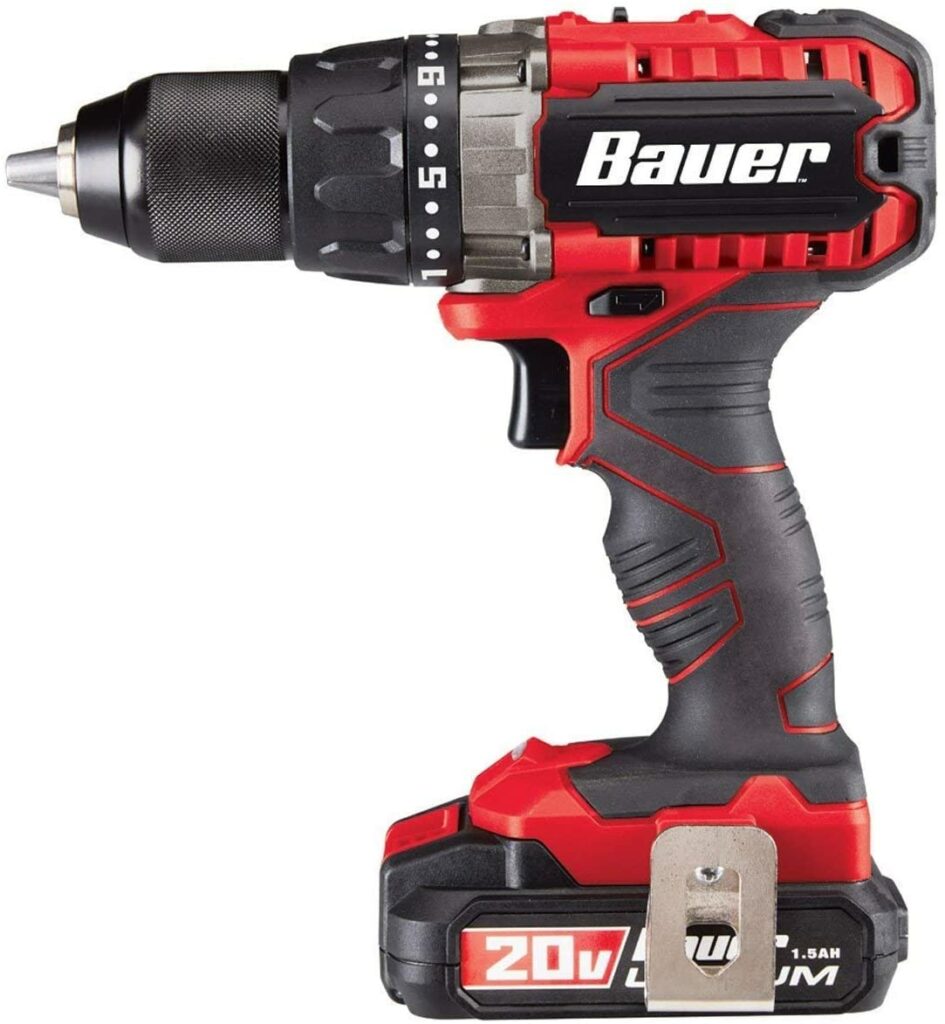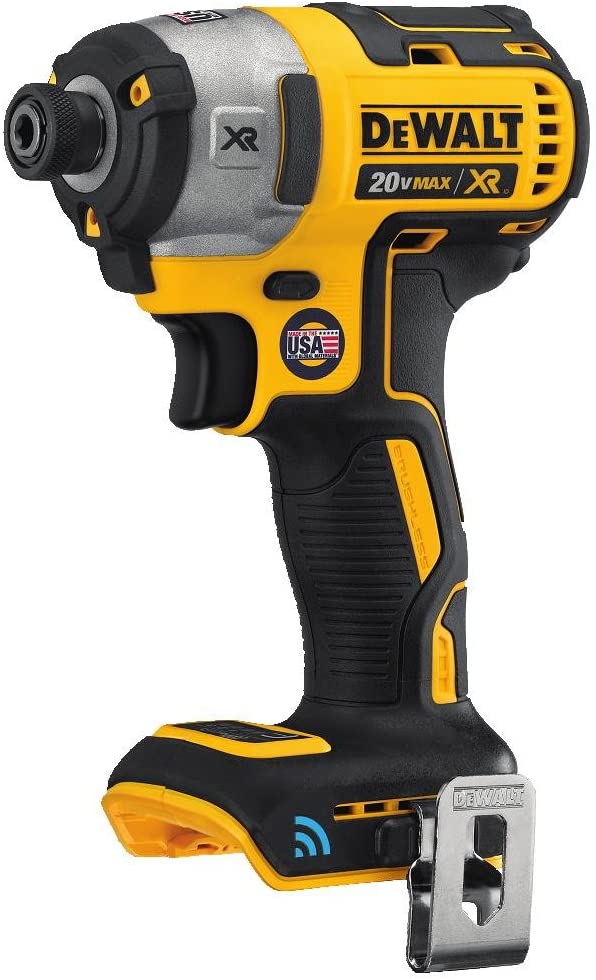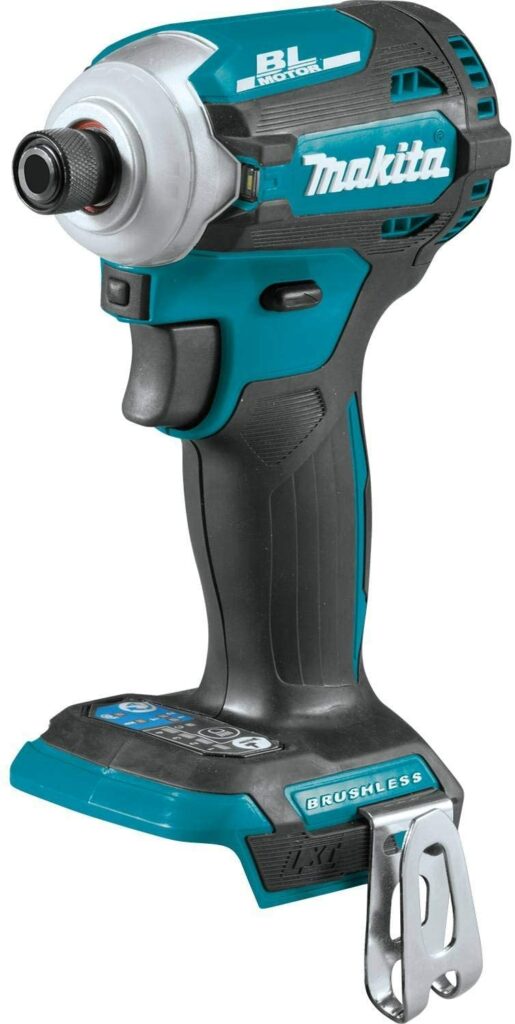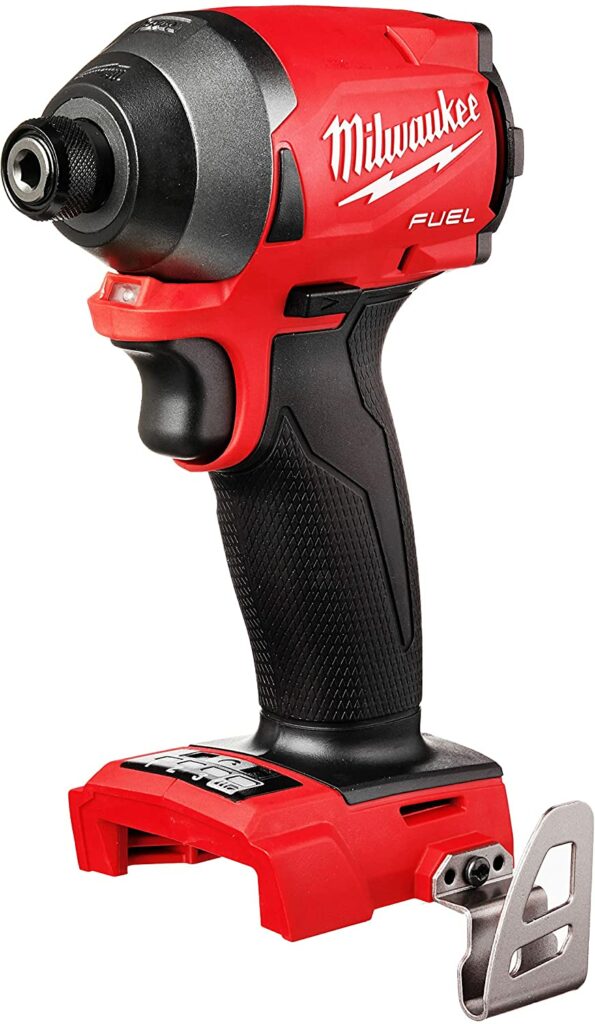Best Impact Wrench? DeWalt vs Milwaukee vs Makita vs Bauer! Let’s find out!
Milwaukee Fuel vs. DeWalt DCF 888B vs. Makita XDT16Z vs. Bauer. Not all impact drivers survive this showdown as sparks fly for one impact driver, and another one nearly has a meltdown as grease pours out of the impact driver housing. After testing the impact drivers, they were dropped from 10 feet onto concrete to test durability. Finally, all of the impact drivers were disassembled to compare internal components. Thanks again, and best regards, Todd
Short Story
| Ran away with the competition | Good, slightly better than DeWalt | Good |
|---|---|---|
 |  |  |
| Milwaukee | Makita | DeWalt |
Long Story
So it comes time to buy an impact driver. There’s a lot to consider, and they are costly. So which brand should you buy? Today we’ll test four brands: Milwaukee, DeWalt, Makita, and Bauer. In the first test, we’ll see which impact driver makes the most torque; not all the impact drivers will survive.
The second test is when they attempt to drive a seven-inch light bolt into a railroad tie. And the final test of the impact drivers will be doing a face plant onto a concrete slab after falling 10 feet. At only $69.99 for the tool, the battery, and the charger, this Bauer brand 20-volt hyper max lithium impact driver is sold at Harbor freight.
And unlike the other brands, this one also includes a battery and a charger hyper-performance motor, the most demanding fasting jobs that will test that max torque, 150 Newton meters or 1300-inch pounds. RPM, zero to 2,900 impacts per minute, zero to 3,300.

The barrel brand comes with a 90-day warranty. So, it’s heavy-duty and guaranteed for 90 days. The tool is made in China. The largest battery sold for the Bauer brand is only three-amp hours, but the impact driver does come with a 1.5-amp hour battery, made in Korea or Malaysia, further processing in China.
The Bauer brand uses a brushed motor, while the other brands we will test use brushless motors. The Bauer impact driver weighs 1,151 grams without the battery. I’ll test the other brands using five-amp hour batteries, but the most significant battery available for the Bauer brand is only three-amp hours.
The Bauer brand has no switch plate control pad and only one forward and reverse speed range. The Bauer with the three-amp hour battery weighs right at 1,789 grams. All the impact drivers we will test use variable-speed triggers and specific applications, such as starting another or a bolt.
You’ll want an impact driver. That’s capable of very low RPM. The Bauer wouldn’t spin any slower than 130 RPM in forward. The maximum RPM in forward was 2,795, 105 RPM slower than advertised. In reverse, the slowest RPM was 155, and the maximum was 2,815, 85 RPM slower than advertised.
The second least expensive product we’ll test at $115.83 is this Milwaukee M 18 fuel. It’s a brushless impact driver rated at 1800-inch pounds. The Milwaukee fuel is made in Vietnam. The Milwaukee only weighs 989 grams without the battery, 162 grams less than the Bauer with a 5-amp hour battery.
The Milwaukee weighs 1,721 grams, 68 grams less than the Bauer. Milwaukee has three impact modes. The Milwaukee has a feature designed for self-tapping screws in sheet metal.
The setting is designed to reduce screw stripping, screw breakage, and damage to work surfaces when driving self-tapping screws zero to 1900 in 1st gear, zero to 2800 in 2nd gear, zero to 3600 in 3rd gear, and under load zero to 1200 impacts per minute.
And first gear zero to 3400 in 2nd gear, zero to 4300 in 3rd. And the high impact mode, the slowest, the Milwaukee will spin and forward is 75 RPM. So, the Milwaukee offers quite a bit more control than the Bauer, allowing for lower RPM. In the high-impact mode, the maximum RPM was 3,577, which is very close to the 3,600 RPM rating in the reverse high-impact mode.
The slowest was 75 RPM, and the fastest was 3,550, 50 RPM slower than its rating. While Bauer offers a 90-day warranty, Milwaukee seems more confident in its impact driver by offering a five-year warranty, costing more than twice as much as the Bauer this DeWalt brand costing $150.87.
They are made in the USA with global materials. The DeWalt also offers tool connect, which allows you to use Bluetooth to connect with the tool, Inventory management, find and locate monitor diagnostics, customized settings, and brushless motor.

The Milwaukee offers a five-year warranty, and the DeWalt warranty lasts three years. The DeWalt is the lightest impact driver yet, weighing in at 953 grams, 36 grams, less than the Milwaukee since the DeWalt’s battery weighs quite a bit less than the Milwaukee’s.
The DeWalt only weighs 1,583 grams with the battery, 138 grams less than the Milwaukee. The DeWalt switch control plate includes three impact modes and a home button. The home button allows you to use Bluetooth to connect and configure the impact driver, such as the RPM range and several other features that went into the app and disable the tool.
As you can see, the tool is no longer working. I’m going to go ahead and reenable it. Okay. It’s back in action. You can also use the app to check the temperature of the drill.
If you want to identify your drill amongst these DeWalt drills, these lights will light up, allowing you to figure out which one is yours. No-load speed, zero to 3,250 RPM up to 3,800 impacts per minute, maximum torque up to 1,825 inch-pounds.
We will test that high-impact mode in forward; the slowest the DeWalt will spin is 150 RPM, slightly faster than the Bauer. And twice as fast as Milwaukee, the 3,305 maximum RPM was faster than a 3,250 RPM rating, but Milwaukee was 272 RPM faster. In reverse mode, the DeWalt wouldn’t go any slower than 150 RPM.
The maximum RPM in reverse mode would be 3,304. So forward and reverse speeds are nearly identical. For $167.03. The most expensive impact driver we’ll be testing is made by Makita 18-volt LXT lithium-ion brushless four-speed impact driver; just like the DeWalt,
the Makita offers a three-year warranty. So, Milwaukee is five years, Makita and DeWalt three years, and Bauer is 90 days. The Makita is made in China. The Makita is by far the lightest impact driver at only 881 grams compared to 953 for the DeWalt. With the battery included, the Makita only weighs 1,501 grams.
In addition to four-speed selection modes, the Makita has several other features, such as a wood mode, which helps prevent a screw from failing at the beginning of driving. It also has a reverse auto-stop feature that stops the rotation of the tool when the nut or the bolt begins moving freely.
It also has a T mode for self-drilling screws and thin metal, 3,600 max RPM, and 1,600 inch-pounds of max torque four-speed power selection. In forward mode, the slowest the Makita would spin is 99 RPM. The Makita claims to deliver 3,600 no-load RPM but only reached 3,413. In reverse mode,

the lowest RPM was 109, and the highest was 3,476, which is still well short of a 3,600 RPM rating. The length of the impact driver is an essential factor. The DeWalt is 135.5 millimeters or 5.3 inches when working in tight spaces. The Milwaukee is 18 millimeters shorter at 117 millimeters or 4.6 inches. The Makita and the Milwaukee are very close to the same length.
The Bauer is just too long for the calipers, and the Bauer is about six and a half inches in length, which is over an inch longer than the DeWalt and about two inches longer than the Milwaukee and the Makita. The DeWalt seems to produce a little bit lighter than the Makita. Even though Milwaukee only has one light, it seems brighter than Bauer’s three lights.
I built the following test rig to measure the tightening torque of impact tools. It’s a simple setup with two 20-ton hydraulic rams sandwiched between two thick pieces of steel. The test will measure the clamp load. I’ll be using premium synthetic grease throughout the testing. The test will last for 15 seconds until the batteries are fully charged.
We’ll test tightening torque first. Then the loosening torque later in the video and the Bauer uses a brush motor and has a much lower torque rating than the Milwaukee Makita and DeWalt. And the Bauer made 900 PSI in forward mode. And Milwaukee is crushing this test, blasting past 900 PSI without a sweat.
And Milwaukee is out of time at 1,600 PSI. Very impressive. And the Milwaukee is rated at 1,800 inch-pounds and the DeWalt 1,825. So according to the ratings, DeWalt should win this contest.
And the DeWalt did very well at 1,450, but that won’t be enough to beat the 1,600 PSI performance. Makita is the lightest of the bunch but came second for no-load RPM. And the Makita tied the DeWalt for second place at 1,450 PSI.
So, it’s Milwaukee in first place at 1,600 PSI DeWalt, Makita tied for second at 1,450, and Bauer in third. Next, I’ll install a left-hand threaded bolt, and we’ll test the reverse rotation torque of each tool. Since Milwaukee just won the last contest, it’ll go first in this round, and we’ll see if any of the other brands can do any better.
And Milwaukee is crushing this test, blasting past 1,600 PSI and finally running out of time at 1,750—awe-inspiring job by Milwaukee. And the DeWalt is off to a great start, and the dial is moving quickly, but 1,750 will be a challenge. The DeWalt did tremendously but came up a little short at 1,675 PSI, and the Makita’s off to a fast start as well, but not moving the dial quickly as the Milwaukee and a Makita are now in third place at 1,600 PSI.

And the Bauer is doing better this time compared to the last 1,375 PSI for the Bauer, which is pretty good, finishing in the fourth position. So again, Milwaukee takes first with 1,750 PSI, DeWalt second at 1,675, Makita third at 1,600, and Bauer last at 1,375.
I don’t recommend using an impact driver to drive a seven-inch leg bolt into a railroad tie. There’s no time limit on this test. As long as the impact driver is making progress, since the DeWalt and the Makita seem pretty evenly matched, let’s test them first; both impact drivers are in the high-impact mode, and the Makita and the DeWalt seem to be making the same rate of progress at first.
But the Makita is beginning to outpace the DeWalt. The DeWalt begins to smoke one minute into this test, and the grip is getting hot. At a minute and a half,
The DeWalt is beginning to make quite a bit more smoke, and grease appears to leak down from around the chuck. At two minutes, the DeWalt is smoking and leaking even worse. And the Makita is now smoking as well. At about two and a half minutes, the Makita socket made contact with the washer.
At about three and a half minutes into the test, the DeWalt made contact with the washer. The handle on the DeWalt is about 250 degrees, and you can see the grease has poured down from the DeWalt onto the adaptor. According to the DeWalt app, the temperature of the impact driver is okay.
The Milwaukee’s on the left, and the Bauer’s on the right. Both impact drivers are in the high-impact mode, and the Milwaukee is much faster than the Bauer, but the Bauer is making pretty good progress. And Milwaukee is quite a bit faster than the DeWalt and the Makita.
For some reason, the Milwaukee is shutting off, and I have to release and then squeeze the trigger to get it going again. I’m unsure what’s happening, but maybe Milwaukee is just taunting the Bauer. Fortunately for Milwaukee, there’s no unsportsmanlike conduct and this showdown.
Either way, it doesn’t matter because Milwaukee just finished, and the Bauer continues to hammer away, but the hammer seems to be slowing quite a bit. The three-amp-hour batter should still have plenty of juice left. At a minute and a half, the Bauer was smoking badly and no longer making progress.
The temperature of the Bauer is about 300 degrees Fahrenheit. Unfortunately, the power did not hold up. Only one of the three lights is still working, and unfortunately, the rest of the impact driver has stopped functioning. So, the DeWalt did slightly better on the clamp load test, but the Makita made faster work of the lag bolt.
So let’s hook them up to the head and see which one comes out on top. And it’s very close, but the DeWalt is overpowering the Makita. Let’s hook up the DeWalt and the Milwaukee and see how they compare, and the DeWalt put up a good fight, but the Milwaukee also came out on top.
The time it takes a tool to respond from when the trigger is squeezed is called trigger lag. It may not seem like a big deal, but trigger lag can slow things down if you’re driving in much faster. Let’s compare Milwaukee and DeWalt first.
And then the winner will compete against the Makita. And Milwaukee is a little bit faster than the DeWalt off the line. Let’s compare Milwaukee to the Makita, and the Makita is quite a bit faster off the line than the Milwaukee.
So, the Makita came out on top, followed by the Milwaukee and then the DeWalt. In the next test, we’ll see which impact driver breaks loose lug nuts the fastest. All of the lug nuts were torqued to 110-foot pounds. The impact driver that reacts the fastest and hits the hardest has the best chance to win.
DeWalt is on the left, Makita is on the right, and Makita wins the first round. Makita wins the second round. Makita wins the third round, slowing things down even more. The Makita delivered three blows before the DeWalt kicked into action.
It took the Makita seven blows to loosen the lug nut. The winner will advance. So, it’s Makita versus Milwaukee. Makita is on the left, and Milwaukee is on the right, and the Makita appears to kick into action about two blows before the Milwaukee.
The Makita needed more blows before the lug nuts began moving like last time. Milwaukee hits much harder than the Makita to switch things up. Milwaukee is on the left, and Makita is on the right.
So once again, Milwaukee takes three wins in a row for Milwaukee. The purpose of the following test is to demonstrate the ability of impact drivers to remove a lug nut from a bolt with golf threads or one that has been cross-threaded. We’ll keep an eye on the green rope to out the total number of rotations in this 32nd test.
The speed of the impact, as well as the force of each impact, will make a massive difference in how quickly it can rotate this engine with the engine brake applied and the spark plug in position, creating resistance from the compression.
And the DeWalt had no problem overpowering the lawnmower brake in the engine’s compression, completing just over three rotations. Testing the Makita next, and the Makita is making this look easy, spinning over the engine, a total of four- and three-quarter rotations compared to just over three for the DeWalt.
And Milwaukee is crushing this test. Once again, Milwaukee began powering down about 16 seconds into the test. However, it had already completed five rotations, and it completed two more for a total of seven before time ran out.
In the final test, each one of the impact drivers will be doing a face plant onto a concrete slab after falling 10 feet. To make things more challenging, each tool will have a socket adapter and a socket attached to the chuck. One pipe will serve as a guide for the other pipe to help make sure the impact drivers hit at the same angle.
And the Bauer hit hard and lost the battery. The electric motors were already damaged from previous tests, but there’s no visible structural damage to the Bauer.
And the DeWalt experienced a small amount of handle flexion but didn’t experience any visible structural damage. DeWalt is still working. The Milwaukee is just a tank and didn’t bounce much at all.
The amount of handle flexion seems to be about the same as the DeWalt; no visible damage to the Milwaukee, and the Milwaukee still works just fine. And the Makita experienced more handle flexion than the Milwaukee and the DeWalt. However, the handle did not break, and the impact driver worked fine.
Next, let’s take apart the barrel to see why the impact driver stopped working, and the impact assembly on the barrel weighs 261 grams. It looks like the bracket that holds the brushes in place failed. The brushes move position, wiping out all the fan blades on the armature assembly. So, at this point, the Bauer is a brushless motor.
Milwaukee’s impact assembly is 255 grams. The DeWalt’s impact assembly is 27 grams lighter than the Milwaukee’s at 228 grams, even though the DeWalt was leaking some grease, and it did become pretty hot.
The grease doesn’t look too cooked, and there are plenty of greases left. And the Makita’s impact assembly weighed two grams, less than the DeWalt’s at 226 grams, whereas the brushless impact driver, the Milwaukee, has the heaviest impact assembly.


Leave a Reply